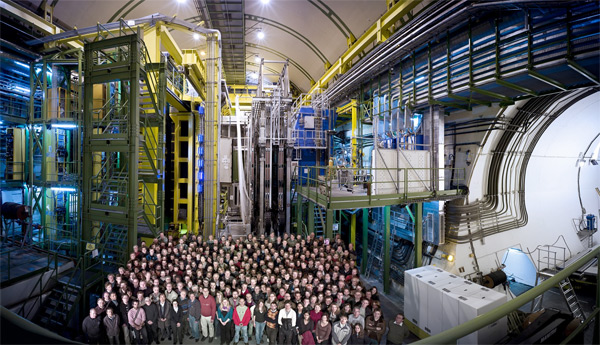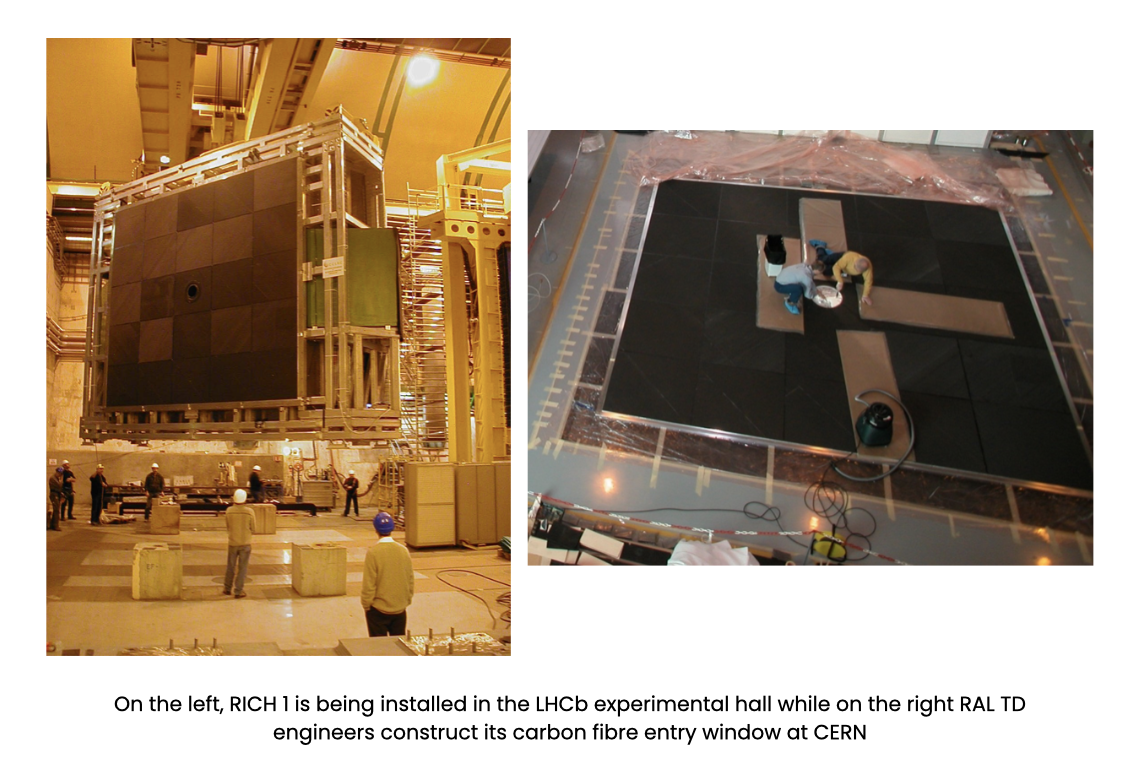
LHC is colliding protons at a centre-of-mass energy of 13TeV, producing 1012 bb pairs each year at the interaction point of the experiment. LHCb exploits this enormous production rate to study CP-violating effects and other rare phenomena in the decay of B and D mesons, opening windows to physics beyond the Standard Model.
Instead of surrounding the entire collision point with an enclosed detector as do ATLAS and CMS, the LHCb experiment uses a series of subdetectors to detect mainly forward particles – those thrown forwards by the collision in one direction. The first subdetector is mounted close to the collision point, with the others following one behind the other over a length of 20 metres. An abundance of different quark types is created by the LHC before they decay quickly into other forms. To catch the b quarks, LHCb has developed sophisticated movable tracking detectors close to the path of the beams circling in the LHC.
The RAL PPD Group, including PhD students, contains approximately 10 people and has responsibilities for the construction and operation of the two RICH detectors, the building of the worldwide Computing Grid to process data and the physics exploitation of the experiment. The main physics interests of the group include lepton flavour violation and unitarity, and measurement of CKM angle γ.
To know more about past LHCb publications, have a look at this page.
To know more about the projects and studentships in which past postgraduate students took part, check the LHCb PhD opportunities page.
DETECTOR UPDATE INVOLVEMENTS:
LHCb RICH DETECTOR SYSTEM
 LHCb has undergone a major upgrade to allow 5 times the instantaneous luminosity of runs 1 & 2 for runs 3 & 4 and the UK had a major role in the replacement of one of the RICH detectors (RICH 1). The RICH system was upgraded with new photon detectors and electronics to allow data collection at the full LHC bunch crossing of 40 MHz, removing the need for a hardware trigger. The RICH 1 detector was also modified to reduce the hit density at the photon detection plane by using spherical mirrors with a longer focusing distance.
LHCb has undergone a major upgrade to allow 5 times the instantaneous luminosity of runs 1 & 2 for runs 3 & 4 and the UK had a major role in the replacement of one of the RICH detectors (RICH 1). The RICH system was upgraded with new photon detectors and electronics to allow data collection at the full LHC bunch crossing of 40 MHz, removing the need for a hardware trigger. The RICH 1 detector was also modified to reduce the hit density at the photon detection plane by using spherical mirrors with a longer focusing distance.
For the RICH Detector System, the RAL group (including colleagues in Technology Department) has:
- Manufactured the structure of the RICH2 detector in collaboration with industry and constructed the entry and exit windows of the detector at CERN.
- Written the detailed simulation software to model the RICH detectors in the main Monte-Carlo programme.
- Developed laser alignment and gas monitoring systems.
- Developed the control software for the RICH detectors.
LHCb GRID COMPUTING
The RAL Group has been very active in the construction of the Worldwide LHC Computing Grid (WLCG) that will be used to process and analyse the data flowing from the experiments. The UK portion of this Grid has been built by the GridPP collaboration of particle physicists and computer scientists. In LHCb, six external Tier 1 centres will reconstruct and strip the data from CERN and make it available for analysis, with the UK centre located at RAL. A series of Tier 2 centres will produce the large simulated datasets that will also be necessary to analyse the experiment - with four regional centres located in the UK.
